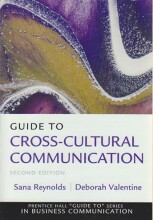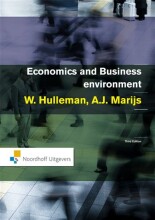Buying behaviour
39 important questions on Buying behaviour
Which model is used when a buying decision process is not further explored through marketing research?
The black box model
Explain what the "black box" is
It's the step in between the stimuli (why buying something) and consumer behaviour (purchasing). It's the mental process that occurs during the decision-making
Name the 5 steps in the consumer purchase decision process?
- Problem recognition (consumer experiences a need)
- Information gathering (process of finding out what product you want)
- Alternative evaluation (choice criteria)
- Purchase decision (the actual process of buying something)
- Post-purchase evaluation (am I happy with my purchase?)
- Higher grades + faster learning
- Never study anything twice
- 100% sure, 100% understanding
What is the internatl process during the information gathering?
The consumer scans his memory to see what he already knows about the product or service
What is the external process during the information gathering? Name the 4 broad sources.
Looking for information about the product in:
- Personal sources: family members, friends and colleagues
- Public sources: info from government, articles in magazines, and tests conducted by
consumer organisations
- Commercial sources: advertisements, labels, advice given by sales people, displays
in stores and websites.
- Experiential sources: consumer's own experience of examining, handling or actually
using the product.
When does cognitive dissonance appear and what does it mean?
It appears after making an important purchase, e.g. when a consumer experiences buyer's remorse, so when he regrets his purchase. I
What can consumers do to reduce or eliminate their cognitive dissonance?
They can use the process of rationalization: emphasise the merits of the product and dismiss its drawbacks.
What can marketers do to help recent buyers resolve cognitive dissonance?
- They can advertise; more people read advertisements after the purchase than before, to reassure themselves they've bought the right product
- They can contact recent buyers
- They can set up toll-free telephone numbers or websites for complaints and questions
- Liberal warranties
- Return policies
- After-sale service
Name three types of problem solving that are used when orientating and buying a product
- Extensive problem solving
- Limited problem solving
- Routine problem solving
What does 'extensive problem solving' entails?
- High involvement decision making
- Purchase that involves a great deal of risk (like a house, car)
- Customer will go through each step of the purchase decision process
What does 'limited problem solving' entail?
- Buyer has some experience with the product or with the product category, for example; restaurant meals, household appliances, garden tools and furniture.
- Customer doesn't to through all steps in the decision-making process
- Customer will compare several brands to reduce the risk of making the wrong decision, or he will ask a friend
What does 'routine problem solving' entail?
- Things you buy out of a habit
- Customer thinks that various alternatives are similar
- Customer has a preference for a certain brand (red bull, fuels for his car etc.)
- Low-involvement decision making
Name the three possible influences on the decision-making process
- personal circumstances
- psychological factors
- social factors
Lifestyle is a way of living characterised by consumers'..
Activities - how they spend time and money
Interests - what they consider important in the environment
Opinions - what they think of themselves and the world around them
Name the 5 situational influences on the purchase decision process
- Reason for the purchase
- Physical environment
- Social surroundings
- Time
- Coincidences
What is a drive?
A strong stimulus that encourages action or motivates the consumer to reduce a need
A reflex is a personal need. What does it mean?
The urge to belong to a group
What is a motive?
An inner urge that compels a person to satisfy a need
Human needs can be classified into a..
hierarchy of needs
Call the hierarchy of needs, in order of importance, and give some examples:
5. Physiological needs (hunger, sleep, sex)
4. Safety needs (security, family stability, protection)
3. Social needs (friendship, belonging, love, acceptance)
2. Personal needs (self-esteem, prestige, status, respect)
1. Self-actualisation needs (self-fulfillment, enriching experiences)
Name the three characteristics of perception:
- Subjective
- --> each person interprets things based on his own experience
- Cumulative
- --> perception is affected by both personal circumstances and by external stimuli, such as advertising. The more often a stimulus is received, the greater the chance it will be understood and correctly interpreted.
- Selective
- --> The brain filters the information so that only a part of it is noticed, understood and remembered.
Consumers rmember the facts that are relevant to their problem or decision, or in line with their own beliefs and attitudes. This is known as...
Selective retention
Almost all consumer behaviour is learned. There are two primary theories as to how the learning process works. How are they called?
- Stimulus-response theory
- Cognitive theory
Who did the experiment with the dog and the bell?
ivan Pavlov - A russian psychologist
What does the stimulus-response model do?
It states that as humans, we learn primarily through experience, and our learning is based on certain stimuli, such as brand names and packaging. It also outlines four stages in the learning process.
What are the four stages in the process of stimulus-response?
- Drive: a strong internal stimulus that moves an individual to action
- Cue: a stimulus or response in the environment that is ought to fulfill a certain need
- Response: the reaction to the stimulus or cue, such as a purchase
- Reinforcement: if the response is rewarding, the person is likely to react in the same way to the cue every time it appears
Give a definition of 'cognitive learning'
Consumer learn through cognition, through reasosning, insight and mental problem solving without any direct experience
Attitudes are complex and consist of three components, namely...
- Cognitive component - A person's knowledge and beliefs about a product or another object
- Affective component - A person's emotions and feelings about an object
- Conative component - A person's intended (and actual) behaviour with respect to an object
The incorporation or absorption of the culture is known as...
socialization
A relatively permanent and homogenous group of individuals or families sharing similar values, interests, lifestyles and behaviour is called:
social class
There are four distinct types of reference groups. Name them.
- Automatic groups
- Aspiration groups
- Dissociative groups
- Membership groups
What is an aspiration group?
A reference group of which a person is not a member, but to which he aspires to belong
The .... describes the phases through which a traditional family progresses, from moving in together or getting married to the death of one of the partners.
family life cycle
Which process has led to business-to-business marketing (B2B)?
Purchasing of industrial products, such as machinery, raw materials, semi-manufactured goods, packaging materials and industrial services, is complex and differs from the buying process of consumers in several ways. This distinction has led to a specialisation, which is called B2B.
There are four types of organisational markets within the B2B sector:
- industrial market - e.g. construction firms, insurers and transportation companies
- reseller market - e.g. car dealers, department stores, supermarket chains and online merchants
- government market - e.g. federal, regional local and foreign agencies that buy a wide variety of goods and serv.
- institutional market - e.g. schools, hospitals, churches, prisons, charities, libraries, museums...
What does 'vendor rating' mean?
To identify and evaluate qualified suppliers
What does the DMU, the Decision Making Unit, do?
This temporary or permanent group of people from different departments participate in the buying process. They share the responsibility for large transactions that may involve millions of euros per year.
Which roles in the buying process do people from an organisation have?
- Initiator
recognizes that the company needs to make a purchas
2. Influencer
helps to define the technical specifications for what should be bought by p roviding useful info
3. Advisor
Offers the company more alternatives to choose from
4. Gatekeeper
The contact person, who controls the flow of information to other buying centre members
5. Decider
The person who ultimately selects the product or service to be bought.
6. Buyer
Selects a supplier, gets competitive bids, sets up delivery and payment schedules etc.
7. User
Very important, because he/she will use the product
How is the routine purchase of products that a company does called?
Straight re-buy
The question on the page originate from the summary of the following study material:
- A unique study and practice tool
- Never study anything twice again
- Get the grades you hope for
- 100% sure, 100% understanding
































